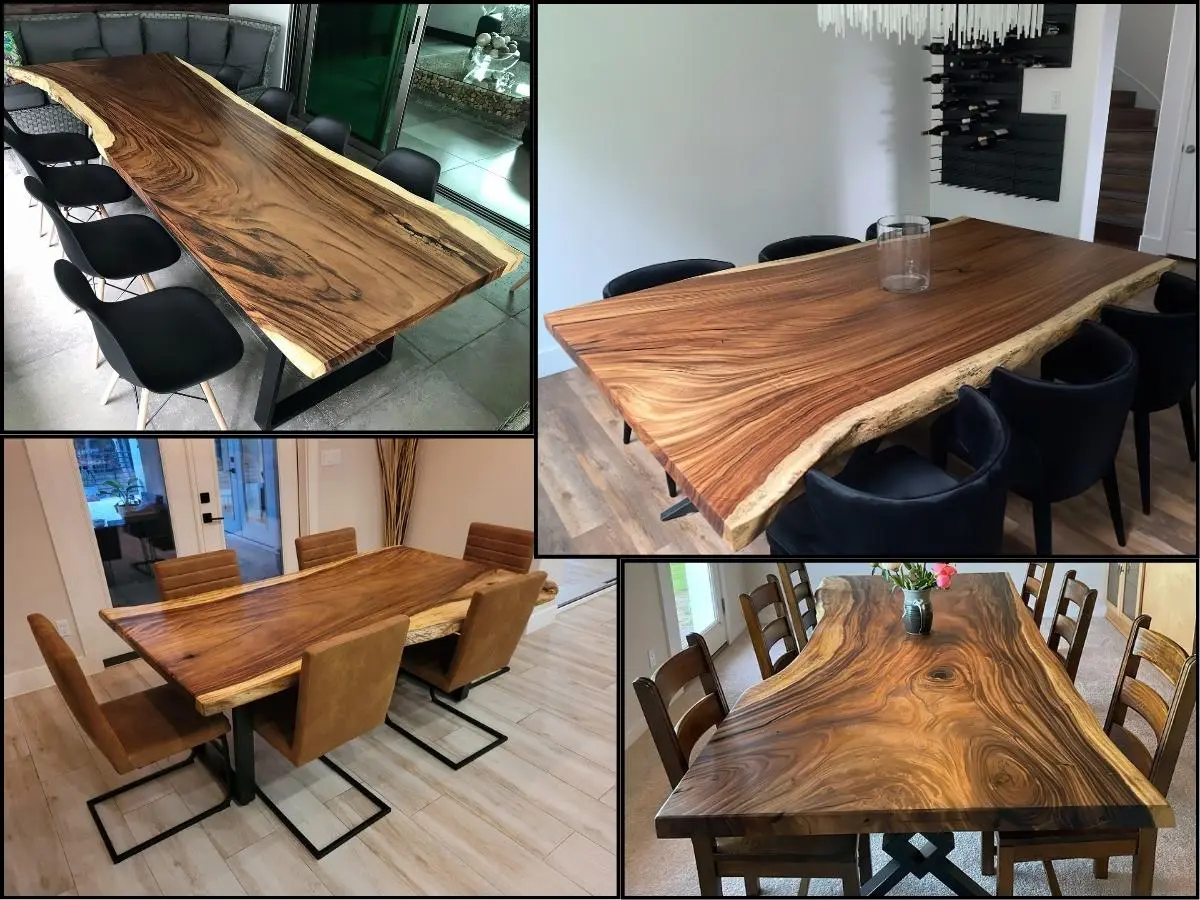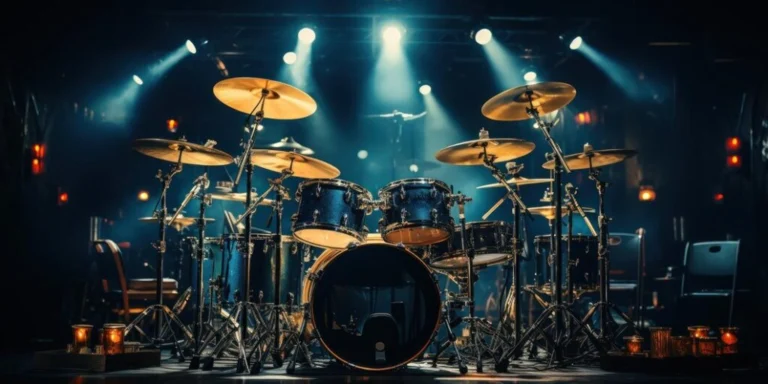Creative Patterns for the Edge of Tables
Patterns for the edge of tables play a crucial role in both design and function. These edge patterns can enhance the overall aesthetic of a table while adding structural integrity. Whether you’re designing furniture for home interiors or commercial spaces, choosing the right pattern is essential. This article will explore various edge patterns, their applications, and tips for incorporating them into your design.
1. The Importance of Table Edge Patterns
Table edges are more than just a finishing detail. The patterns used along the edge of a table can influence both appearance and durability. These patterns help protect the edges from damage and wear while contributing to the overall design aesthetic.
2. Common Patterns for the Edge of Tables
2.1. Straight Edges
Straight edges are the simplest and most common pattern for table edges. This clean and minimalist design works well in modern and contemporary settings. It provides a sharp, polished look that complements sleek interiors.
2.2. Rounded Edges
Rounded edges are both functional and stylish. This pattern softens the table’s appearance, making it safer, especially in homes with children. Rounded edges also work well in casual and rustic settings, giving the table a smoother, softer profile.
3. Decorative Patterns for Table Edges
3.1. Beveled Edges
A beveled edge features an angled cut that creates a sloped profile around the table. This pattern adds depth and sophistication to a table’s design, offering a subtle, elegant detail. Beveled edges are ideal for formal dining tables or office furniture.
3.2. Ogee Edges
The ogee edge is a classic decorative pattern that features a gentle “S” curve along the table’s perimeter. This pattern is perfect for traditional or antique furniture styles, adding a touch of craftsmanship to the table.
4. Intricate and Unique Edge Patterns
4.1. Bullnose Edges
Bullnose edges are fully rounded and give the table a continuous, smooth finish. This pattern is often used for kitchen countertops and dining tables, offering a combination of durability and a sleek appearance.
4.2. Waterfall Edges
Waterfall edges feature a dramatic drop from the table’s top, creating a seamless transition from the horizontal surface to the vertical sides. This pattern is perfect for modern, minimalist tables and adds a sculptural element to the design.
5. Custom Patterns for the Edge of Tables
5.1. Carved Edges
Carved edges allow for artistic expression in table design. These custom edges often feature intricate detailing such as floral or geometric patterns. Carved edges are commonly seen in luxury furniture and can be used to create a one-of-a-kind piece.
5.2. Routed Edges
Routed edges involve using a router to create detailed grooves and patterns along the table’s edge. This pattern allows for endless design possibilities, from simple lines to complex, decorative motifs.
6. Materials Influencing Edge Patterns
6.1. Wood Edge Patterns
Wood is a versatile material that can be shaped into various edge patterns. Whether working with oak, walnut, or mahogany, wood can be carved, routed, or beveled to achieve the desired look.
6.2. Stone and Marble Edge Patterns
Stone and marble edges are often polished and shaped into bullnose or beveled patterns. These materials offer a luxurious finish, and their edge patterns contribute to the elegance of the table design.
7. Patterns for the Edge of Tables in Modern Design
7.1. Industrial-Inspired Edges
Industrial designs often feature clean, sharp edges with minimal detailing. Steel or metal tables with straight or beveled edges are popular in modern lofts and urban spaces.
7.2. Rustic and Farmhouse Edges
In rustic or farmhouse designs, rounded or carved edges made from natural wood are commonly used. These patterns enhance the table’s organic appearance and add warmth to the design.
8. Practical Considerations for Edge Patterns
8.1. Safety and Functionality
Choosing the right edge pattern is important for safety, especially in homes with children. Rounded or bullnose edges minimize the risk of injury by eliminating sharp corners.
8.2. Durability and Maintenance
The edge pattern you choose can affect the table’s durability. Bullnose and beveled edges are more resistant to chipping and wear, making them a great choice for high-traffic areas.
9. Expert Insights on Table Edge Patterns
9.1. Quotes from Furniture Designers
Furniture designer, Sarah Jones, states, “The edge pattern of a table is one of the first things people notice. It’s not just about aesthetics but also function. A well-designed edge pattern can protect the table and enhance its style.”
9.2. Trends in Table Edge Patterns
Experts in furniture design are seeing a shift toward more intricate and personalized edge patterns. As bespoke furniture becomes more popular, edge patterns are becoming a key element in custom designs.
10. Incorporating Edge Patterns into Your Table Design
10.1. Matching Edge Patterns to Table Style
The edge pattern should complement the table’s overall style. For example, ogee edges work well with antique or traditional tables, while straight or beveled edges suit modern designs.
10.2. Color and Finish Considerations
The finish of the table edge can also impact its appearance. A dark wood edge with a high gloss finish will highlight patterns more dramatically than a matte or natural finish.
11. Case Studies: Beautiful Table Edge Designs
11.1. Custom Dining Table with Beveled Edges
A custom-designed dining table with beveled edges enhances the room’s sophisticated ambiance. The beveled edges add a sense of refinement, making the table the focal point of the space.
11.2. Rustic Farmhouse Table with Rounded Edges
In this case study, a rustic farmhouse table with rounded edges blends perfectly into a cozy, country-inspired kitchen. The rounded edges offer safety and comfort, while the natural wood finish adds warmth to the room.
12. Future Trends in Table Edge Patterns
12.1. Sustainable Materials and Patterns
As sustainability becomes more important in furniture design, the use of eco-friendly materials such as reclaimed wood for table edges is gaining popularity. Patterns for the edge of tables are evolving to reflect this trend, with more designers opting for sustainable, organic shapes and finishes.
12.2. Technology-Driven Designs
Advancements in woodworking technology are allowing for more complex edge patterns. Computer-aided design (CAD) and CNC routing machines make it possible to create precise and intricate patterns that were previously difficult to achieve by hand.
Conclusion
Patterns for the edge of tables offer endless possibilities for enhancing both the appearance and functionality of furniture. From simple straight edges to intricate carved designs, the right pattern can elevate your table to a new level. Whether you prefer a modern, minimalist design or a more traditional, decorative look, choosing the right edge pattern will ensure your table stands out. Keep in mind both aesthetic appeal and practical considerations, such as safety and durability, to select the best pattern for your table.






